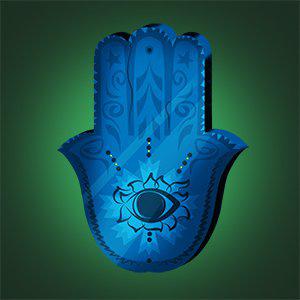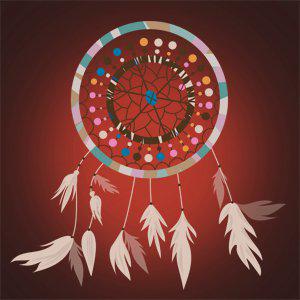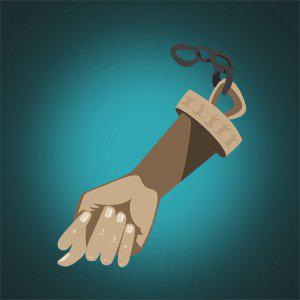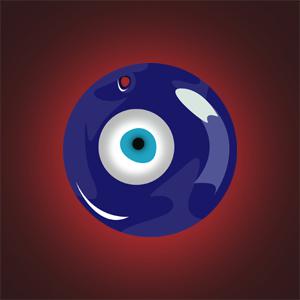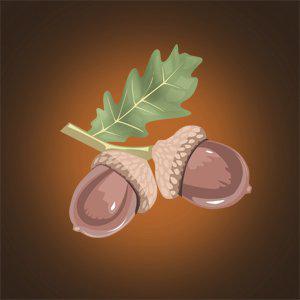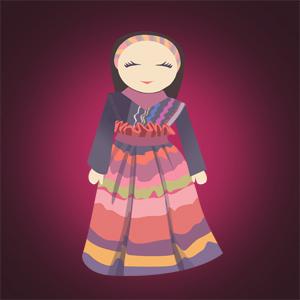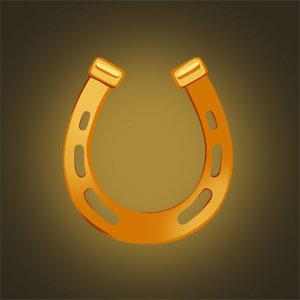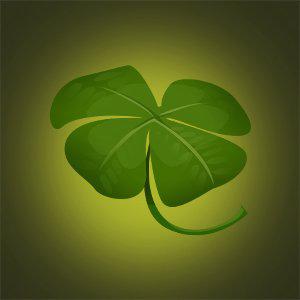Around the world, from culture to culture and throughout history, luck has taken many forms, such as Asian good luck charms or lucky animals. We’ve put together the ultimate list of good luck symbols. We looked into their origins and what they mean to those who believe in them. Whether you’re about to engage in games of chance or ready to try your luck at an real money online casino, grabbing one of these good-luck amulets in advance might just turn Lady Luck in your favor.
Hamsa Hand
Believed to ward off the evil eye, the Hamsa hand has become one of the most popular good luck symbols around the world. The Hand of Fatima and the Hamsa hand are common in both Jewish and Muslim communities. In Jewish communities call it the Hamsa Hand or the Hand of Miriam. Muslim communities recognize it as the Hand of Fatima or the Khamsa.
The evil eye is a malicious stare from someone believed to cause illness, death, or general bad luck. The owner of the Hamsa hand is believed to be protected from all negative energies. The most common of these is the ‘evil eye,’ the envious glares from people who wish you harm. Hamsas feature an eye symbol, said to distract the source of the evil eye and deflect it away from the owner.
Based on the Torah
The Hamsa is said to represent the five books of the Torah, which are Genesis, Exodus, Leviticus, Numbers, and Deuteronomy, and are also known as “The Five Books of Moses.” Both “Hamsa” in Hebrew and “Khamsa” in Arabic mean five. In Jewish communities, the Hamsa hand is also known as the Hand of Miriam, named after Moses’s sister. Legend says that Miriam’s virtues contributed to the constant supply of water for the Israelites during the forty years in the deser. The well that seemed to follow the people of Israel came to be known as Miriam’s well. She symbolizes protection, luck, and happiness.
In Muslim communities, the Khamsa is also known as the Hand of Fatima. It was named after Fatima al Zahra, the daughter of the Prophet Muhammad. She came to be known as pure and completely without sin, and the Hand of Fatima is recognized as a strong symbol of protection, power, and strength. The Khamsa represents the Five Pillars of Islam – faith, prayer, pilgrimage, fasting, and charity.
The hand-shaped symbol appears in the color blue and features symbols like a fish, an eye, or the Star of David. The Hamsa serves as a sign of protection. It also represents blessings, power, and strength. Sometimes it appears with the fingers spread apart to ward off evil. But is most commonly seen with the fingers together. This brings good luck.
Dreamcatchers
The dreamcatcher is probably the most well-known Native American symbol next to the Chief’s feather headdress. The dreamcatcher was first created by the Ojibwe people before spreading to other native tribes like the Lakota and the Sioux in the 1960s and 1970s during the Pan-Indian Movement. Some consider the dreamcatcher a symbol of unity among the various Indigenous Nations. Others think that it’s become over commercialized and misappropriated by non-Native people.
For the Ojibwe and other Native American tribes, it is believed that the night air is full of dreams, both good and bad. Babies and young children are unable to defend themselves against bad dreams. So the dreamcatcher is especially helpful for them, as it filters the bad dreams and only allows good dreams to enter the sleeper’s mind.
Spider woman
Ojibwe legend says that Asibikaashi, also known as the Spider Woman, was the protector of young children and babies for the tribe. However, as the Ojibwe people began to spread all over the continent, it became harder for her to protect all her people. So, she told all mothers, sisters, and grandmothers to weave magical webs on willow hoops for the babies and young children and hang them above their beds to protect them from bad dreams.
One Lakota legend says that long ago, the tribe elder was standing on a mountaintop and had a vision of the great teacher Iktomi, who appeared as a spider. Iktomi spoke to the tribe elder of the cycles of life and how human actions could affect nature’s harmony. He did it all while spinning a web on a hoop of feathers, horsehair, and beads. He presented the elder with the hoop and told him that belief in the Great Spirit would allow the hoop to keep good dreams, and would help his people make good use of their dreams.
Bad dreams
A different Lakota legend says that a Shaman fell ill, haunted by bad dreams. In order to cure himself, he went to sleep holding a medicine wheel. However, a spider found its way down to the wheel and spun a web that covered it, except for a small hole in the center. When the web was complete, an owl flew over and shed a single feather, which became trapped in the web and hung from the center hole. In the morning, the Shaman woke after a peaceful sleep and cured of his sickness. Believing it was the medicine wheel, he was shocked when he found the web and the feather. The dreamcatcher was born.
Both the Ojibwe people and the Lakota people believe that dreamcatchers provide good dreams if they are hung above one’s bed. They also believe that dreamcatchers work in different ways. The Ojibwe believe that the web catches bad dreams and burns them up in the light of day. However, the good ones pass through the center hole, down the feathers, and into the sleeper’s head. The Lakota believe that the dreamcatcher snares all the good dreams in its web, which the owner then carries around for the rest of his or her life. The center hole allows bad dreams to pass through, harmless.
How to make a dreamcatcher
Dreamcatchers are made of red willow twigs formed into the shape of a circle, on which yarn or fiber is woven into a web and adorned with beads and hanging feathers. In Ojibwe lore, the circle hoop of the dreamcatcher represents the sun, and the web’s eight connections with the hoop represent the legs of the Spider Woman. There is some contention when it comes to the meaning of the beads. According to some, the beads are a representation of the Spider Woman, the web weaver herself. Others believe that beads symbolize good dreams that could not pass through the web, and are kept in the form of sacred charms.
Either way – if you’re having trouble sleeping because of bad dreams, hang up a beautifully woven dreamcatcher and you’ll be dreaming happy dreams in no time.
Figa Good Luck Charms
Originating in Etruscan Italy, the Mano Figa charm is one of the oldest symbols of good luck that is still used today. The charm depicts a fist with the thumb protruding between the pointer and middle fingers. The gesture has many different meanings, some of which date back thousands of years. In Central Asia it is considered an obscene gesture, like the middle finger. Over in Japan, it means sex. In Italian, “mano” means “hand,” and “figa” means “fig,” which is a slang term for female genitalia.
Associated with fertility, virility, and pleasure, in ancient times the figa charm was worn as a tribute to The Goddess and Bacchus, the Roman god of wine, as the fig was associated with him. The charms were made of silver or coral, which were both considered sacred elements of the Roman goddesses Luna and Venus.
During the early 17th century, the figa charm made its way from Italy across the Atlantic Ocean to South America. It is now commonly produced and worn throughout Brazil and Peru. Here, the figa charm was believed to protect wearers from bad energy, especially the evil eye. Nursing mothers and babies are thought to be the most susceptible to the evil eye. In Brazil it is tradition to put a small black figa charm around a child’s wrist to ward off the bad energy. It is also believed that the obscene gesture will distract the devil from attempting to take your soul.
Nazar
The nazar is an amulet believed to protect the owner from the evil eye. That’s the malicious glare that comes from others and can cause harm, death, or general bad luck. This protection symbol can be found in a number of different countries, including Armenia, Turkey, Romania, Albania, Iran, Afghanistan, Macedonia, Bulgaria, Greece, Syria, Israel, Egypt, Pakistan, and Iraq, among others.
A nazar is an eye-shaped amulet typically made of handmade glass. They are traditionally blue, white, light blue, and black. Sometimes the eyes feature gold as well. The most powerful nazars are blue, because the color symbolizes protection. This belief is demonstrated by the many countries by painting the front door of your home blue. Like the blue front door protects the home from bad energy and evil, so the blue nazar protects the owner from the evil eye.
The nazar is used to distract the evil eye, since its resemblance is supposed to be close to that of a real human eye. In this way, the amulet takes the brunt of the evil eye without being affected. The owner is left unharmed.
Oak Trees and Acorns
Oak trees represent good luck symbols for a number of different peoples of past major civilizations, including the Celts, Romans, Greeks, and the Germanic tribes. Celtic Druids found oak leaves and acorns to be sacred and carried them everywhere to attract good luck. Celtic religious leaders used them to worship in oak groves. The Norse believed that the oak tree belonged to Thor, the god of thunder. Legend said that he found shelter from a violent storm by sitting under a giant oak tree. Because of this story, the Norse believed that displaying acorns on a windowsill would protect a house from lightning. This is why window blind pulls are often in the shape of an acorn.
Ancient trees
Oak trees can live for more than 1,000 years and grow to a staggering 45 meters (147 feet) tall. They were considered the king of all trees and were sacred to the supreme god of various religions. The oak was sacred to the Greek god Zeus, the Roman god Jupiter, and the Norse god Thor, among others. Ancient kings wore crowns of oak leaves as a symbol of the god they worshipped and “represented” on Earth. Successful Roman commanders received oak leaf crowns during victory parades. The symbolism has lasted to the present day. The oak tree represents power, strength, perseverance in the face of adversity, longevity, and success.
It can take an oak tree anywhere from 20 to 50 years to start producing acorns. But one oak tree can drop as many as 10 million acorns in its lifetime. Acorns, “the fruit of the oak,” are symbols of youth, prosperity, luck, and patience. English soldiers carried acorns during the Norman Conquest to bring luck and protect themselves from harm. They believed that if a woman carries an acorn on a string around her neck it will prevent premature aging and promote lasting youth.
Today, the oak tree is the national tree of both England and the United States.
Worry Dolls
Ever had those nights when you can’t let go of the worries keeping you awake? Those little good luck symbols will help you get a good night’s sleep. Guatemalan worry dolls take your worries and put them to rest for good.
Worry dolls are half an inch to two inches high and made from bound pieces of wood or wire which yarn or cloth is wound around. They feature traditional Mayan costumes made of scraps of traditional woven fabric, and usually come in groups of six in handmade pouches. They were traditionally for children but are used by people of any age. Legend says that you tell worry dolls your concerns and then sleep with them under your pillow. After a good night’s sleep your worries will have been taken care of by the dolls.
The Legend of Worry Dolls
The legend of worry dolls says that two children, Maria and Diego, lived with their mother and grandfather in a thatched hut with one room in Guatemala. Their mother made clothing to sell at the market, their grandfather taught them to farm, and they were happy despite being poor.
One season there was a drought so crops weren’t growing. One night, Diego woke to find someone stealing his mother’s cloth and alerted his family, but the intruder escaped. His mother was distraught and fell ill. So the kids realized their family would starve if they didn’t find a way to make money. So Maria and Diego found scraps of cloth and small twigs and fashioned dozens of tiny dolls in tiny clothes. Before going to sleep that night, Maria took some of the dolls, told them her worries, and put them under her pillow. In the morning, the dolls were on the table, and she believed they were magic.
Magic dolls
They took the dolls to the market, but had no luck selling them. Just before they packed up to go home empty-handed, a stranger asked what they were selling. “Magic dolls,” Maria said. Delighted, the stranger bought them all. This gave the children enough money for them to live comfortably for a year. The kids rushed home to tell their grandfather and their mother, who wasn’t sick anymore. As they reached home, it started to rain, effectively ending the drought.
Maria then found the same pouch of dolls she had spoken to the night before, even though she was certain she had sold them. Inside the pouch was a note that said to tell the dolls your secret wishes, your problems, and your dreams. When you wake up you might find the magic in you to make your dreams come true.
Lucky Horseshoe
The horseshoe is probably the most widely recognized good luck symbol in North America. It is also prevalent in countries and cultures around the world. Horseshoes were traditionally made of iron, a material that was believed to ward off evil spirits. They’re held in place with seven nails, which was considered the luckiest number. Iron was considered sacred, strong, and powerful since it could withstand fire without melting or burning.
The origin of the belief that horseshoes are lucky comes from Saint Dunstan, who worked as a blacksmith before becoming Archbishop of Canterbury. The legend says that one day, the Devil walked into Dunstan’s shop and requested that he shoe his horse. Dunstan agreed, but rather than nailing the shoe to the horse’s hoof, he nailed it to the Devil’s. Howling in pain, the Devil begged Dunstan to remove it. The blacksmith agreed, but only after forcing the devil to promise never to enter a household with a horseshoe nailed to the door. After this, many believed that if you nailed a horseshoe above a house or barn door with the points facing down, a witch or evil spirit could never walk beneath it and enter the place.
Lucky Horseshoe in Mexico
In Mexico, used horseshoes are wrapped in colorful thread and decorated with sequins and portraits of San Martin Caballero, the horse-riding monk. Included on the back of the horseshoe is usually the Oracion de la Herradura, or the prayer of the horseshoe, which is supposed to invoke the Holy Trinity and bring the holder luck, health, and wealth. In Turkey and Greece, horseshoes serve as amulets to protect against the evil eye. They are usually made of metal or blue glass. Of course they integrate the eye emblem to ward off any malicious glares.
There is quite a lot of contention concerning which way the horseshoe is supposed to face. Some say the ends of the horseshoe should point up to collect all the good luck. A horseshoe pointing down causes all the luck to fall out. Others believe that the ends should point down because the good luck will rain down on whoever passes underneath it. Regardless of how the horseshoe is supposed to be placed, almost everyone agrees that a used and discarded horseshoe possesses more magical power than horseshoes merely bought. But don’t worry – there are many sites where you can buy a used horseshoe. So you can take advantage of at least half of the magical luck-collecting power.
Four-leaf Clovers
Considered one of the rarest good luck symbols. The odds of finding a four-leaf clover in the wild are one in 10,000. However, because of the demand for this little green luck charm, today there are a number of farms that specialize in cultivating four-leaf clovers. One farm in the U.S. produces as many as 10,000 clovers a day.
The four-leaf clover is a rare variation of the common three-leaf clover. However, these plants can produce more than four leaves. Five-leaf clovers, also known as rose clovers, have been successfully cultivated and are considered a special prize. In very rare instances, clovers have been known to grow six leaves or more in nature. In fact, the highest number of leaves ever found on a single clover stem was 56. This rare lucky symbol was found by a man named Shigeo Obara in 2009. Now THAT is one lucky clover!
According to Christian legend, Eve brought a four-leaf clover with her when she left the Garden of Eden. So, anyone lucky enough to possess one had a piece of Paradise. During the Middle Ages, people believed that a person who carried a four-leaf clover could see fairies and recognize witches or potentially evil spirits.
St. Patrick
Nowadays, the four leaves on the clover represent faith, hope, love, and luck. And, believe it or not, the four-leaf clover is not associated with St. Patrick’s Day. The three-leaf clover, or shamrock, is the good luck symbol tied to the national holiday. That’s because Saint Patrick is said to have used the plant as a metaphor for the Holy Trinity.
So now you know. Pick your ultimate good luck symbols. Whether you hang it around your neck, over the bed or above the door, hold it in your arms or pin it to your lapel. Give your luck a spin today at Casino Planet 7!


